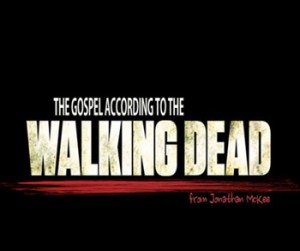1.
Have you ever experienced intense shelling?
Shelling, in this case, is picture language for when life’s difficulties slam into you one right after another.
In seasons of intense shelling, the pressure never lets up, and the stress is relentless. You feel stuck in the battle, and the battle never seems to end. You can’t flee to safety. And you can’t fight your way out.
What then?
Envision with me some actual shelling. Get a picture in mind of those who’ve been there and successfully navigated it. Then apply lessons to your own seasons of intense bombardment.
2.
Peleliu was long on dead bodies, but woefully short on dirt.
The tiny south Pacific island known as Peleliu was made almost solely of coral, harder than cement, and that fast became a problem in 1944, WWII veteran R.V. Burgin told me.
Since a corpse couldn’t be buried in the coral, and, due to intense literal shelling, enemy corpses soon littered the ground.
The dead bodies bloated up in the hot sun during the 120-degree Fahrenheit days, the flies descended as thick as blackbirds, and the sour stench soon filled the Marines’ nostrils. In some places on Peleliu, everywhere a man stepped, he risked stepping on a dead body.
Such was the horrific situation the soldiers found themselves in. What people today seldom realize about the battle on Peleliu, Burgin added, was that fighting while dodging corpses occurred both day and night, which confounded matters.
During daylight hours, the Marines overtly fought the enemy. Then at night, the enemy snuck out of caves and tried to infiltrate the Marines’ lines. Several times Burgin went 72 hours—three full days and nights—without one wink of sleep.
Once, Burgin had been awake hour after hour, fighting on the line. The shelling was relentless. By the third afternoon, he found he couldn’t focus his eyes anymore. So he called his sergeant, explained, and was ordered to come off the front line.
There were no secure places of safety anywhere. No beds or showers or stockades. Coming “off the line” meant hiking back to where two big guns were firing harassment rounds. There was a shell hole in front of one gun, and Burgin crawled right into that hole and promptly fell asleep.
The two guns kept firing every two minutes, but Burgin slept from 8 at night until 8 the next morning. The guns fired right over his head the whole time he slept.
How did Burgin sleep so soundly? Sheer exhaustion was undoubtedly a factor.
Yet I believe it was something more. A marker, perhaps, of someone who knew how to survive seasons of great difficulty.
3.
When I met R.V. Burgin some 65 years after the action on Peleliu, it was at a military show in Pennsylvania.
A strong, wiry figure, even in his late 80s, he and I shook hands and had a few meals together, and since our flights home left from the same airport terminal, we hung around in the metal chairs at his gate and talked shop. A few months later I interviewed him extensively about his experiences during the war.
It’s hard for me to believe a man like R.V. Burgin still exists in modern times. He’s an extreme warrior, an elite breed, a man who literally walked on corpses because there was no place to bury them, a man who slept twelve hours straight while two huge guns kaboomed overhead.
But one startling fact I noticed about Burgin is that he’s also a regular guy.
When Burgin came home from the war, he worked at the Post Office. He married and had four daughters. He took sightseeing trips around the States with his wife and children. Sixty-five years later, he walked to his terminal at the airport and sat in a metal chair, just like me.
And this first lesson may be one of the greatest encouragements of Burgin’s story.
Yes, the shelling he endured on Peleliu went on for a long, long time.
But, no, even in the midst of it, he knew the shelling would not last forever.
4.
What kind of shelling have you experienced?
In my 20s I worked in youth ministry. For a few years a family in our community experienced intense difficulty. I walked with them through several dark years, although certainly I didn’t feel their pain to the degree they felt it. I remember how day after day, month after month, even year after year, life for this family was agonizing.
The couple, in their 40s, had 5 children. One child had medical problems, which caused alarm. Most days the problems were manageable.
Then the couple had another child, born with Down’s syndrome. They loved their special needs child with all their hearts, yet the family’s world turned upside down.
Less than a year later, the unthinkable happened. Their oldest son’s wife, a beautiful young woman with a new baby of her own, experienced mental health issues, mostly due to severe post-partum depression, and she ended up taking her life.
Her death, and the horrific way it happened, caused unimaginable pain through their family, not to mention within their close-knit farming community.
For them, it seemed the shelling would never stop.
5.
I vividly remember the cold February morning in 1995 in that small farming community when the oldest son’s wife took her life.
The sun was out, strange for wintertime in the Pacific Northwest, and I drove to the family’s house. A crowd was already there, friends and extended family members, all sobbing. All shocked. All fighting hard to keep going.
Two of the family’s boys were in my high school youth group, so I invited the boys outside in the bright sunshine, away from the wailing inside the house, and we walked in the wet grassy field toward the back of their property.
We walked in silence for a long time, because there seemed little of substance that could be said just then. What worked was to put one foot in front of the other and keep going. Even when life didn’t make sense. Even when life was agonizingly painful.
Here’s some good news.
This family and I are still in contact, in varying degrees, some 18 years later. The boys have grown and are well adjusted. The child with the medical problems grew up, got married and had children, and is mostly healthy today. The young husband who lost his wife is remarried. The baby with Down’s syndrome grew up to be a remarkable young woman who’s touched many lives for good.
No, the family’s success now doesn’t ever diminish the hardship they went through years ago, but it helps put their difficulties into perspective. Their example offers another lesson: when life is difficult, agonizing, and uncertain, sometimes the best thing you can do is just keep going forward.
R.V. Burgin said something similar, when I asked him how he coped on Peleliu: “Sometimes you just need to keep fighting, even though you can’t see the end of the war. That’s what we did, day after day after day.”
6.
A famous bit of ancient poetry, Psalm 46, is often quoted at funerals.
God is our refuge and strength,
an ever-present help in trouble.
Therefore we will not fear, though the earth give way
and the mountains fall into the heart of the sea.
For years I understood that passage only in the context of comfort. That God is a sanctuary, a place of refuge through storm.
But the older I get, I understand it more as a warning. It’s an admonition to develop a gritty, soldier-like faith.
It doesn’t say if the earth give way. It says though it will. Meaning, the earth has a nasty habit of giving way, and we’re to expect calamity when it arrives. The foundations of our lives will be rocked, and our mountains will fall into the heart of the sea. So—the question is begged—what kind of refuge and strength will we turn to when those hard times come?
Trouble is a given. That’s the implication. God is seldom in the business of removing trouble from people’s lives, even though we’d like him to do that. God is a fellow journeyer in our seasons of intensity. He’s not so much a remover of troubles as he is a platoon sergeant through them.
Here’s the third lesson. I asked Burgin about faith in the midst of intense shelling. This is how he described it:
Sure there was fear. There was always fear.
And, sure, I prayed.
But the way I figured it, God had a lot of people to take care of, so I never wanted to bore him with any long prayers. I just always said, ‘God, my life is in your hands. Take care of me.’
I used that same prayer all the way through the war. And he did. He took care of me. I never wondered why other people were getting maimed, mutilated, and killed, and I wasn’t. I had no answer for that, but I never gave thought to why I never got hit. I just never wondered about it.
Certainly I never had any pity parties, crying out to God about all the trouble that came our way.
You just do your damn job and let things fall where they fall.
7.
Consider then, when we find ourselves in seasons of great intensity:
We’re invited to keep putting one foot ahead of the other.
Often we can’t figure a way out of a difficult season, or make the pain lessen. But we can keep on living. We can keep going forward little by little. And someday, usually, perhaps far in the future, the hurting will stop … or at least become manageable.
We’re invited to have faith.
Not some dim-witted kind of unruffled faith that goes around seeking an easy life. But—and I offer these words carefully—a gravel-spitting-WWII-Marines-sort-of-faith that says, “God, my life is in your hands. Thanks for being in the muck and the blood with me when the shells are falling.”
And we’re invited to go outside a house of mourning for a walk.
Almost always, in small ways, opportunities exist to take moments of silence away from the shelling. Those small moments occur in grassy fields of our choice. Since God is ever present in times of trouble, we are reassured of refuge and strength.
We sleep soundly. Even while huge guns kaboom overhead.
And then, because we must, we return to the battle.
Question: Have you ever found yourself in a season of intense shelling? How did you get through it?
Read more about R.V. Burgin and the WWII Marines who fought in the Pacific in the new book,
—VOICES OF THE PACIFIC—
By Adam Makos with Marcus Brotherton
Available April 2, 2013. Ask for it at a bookstore near you, or order your copy HERE.












